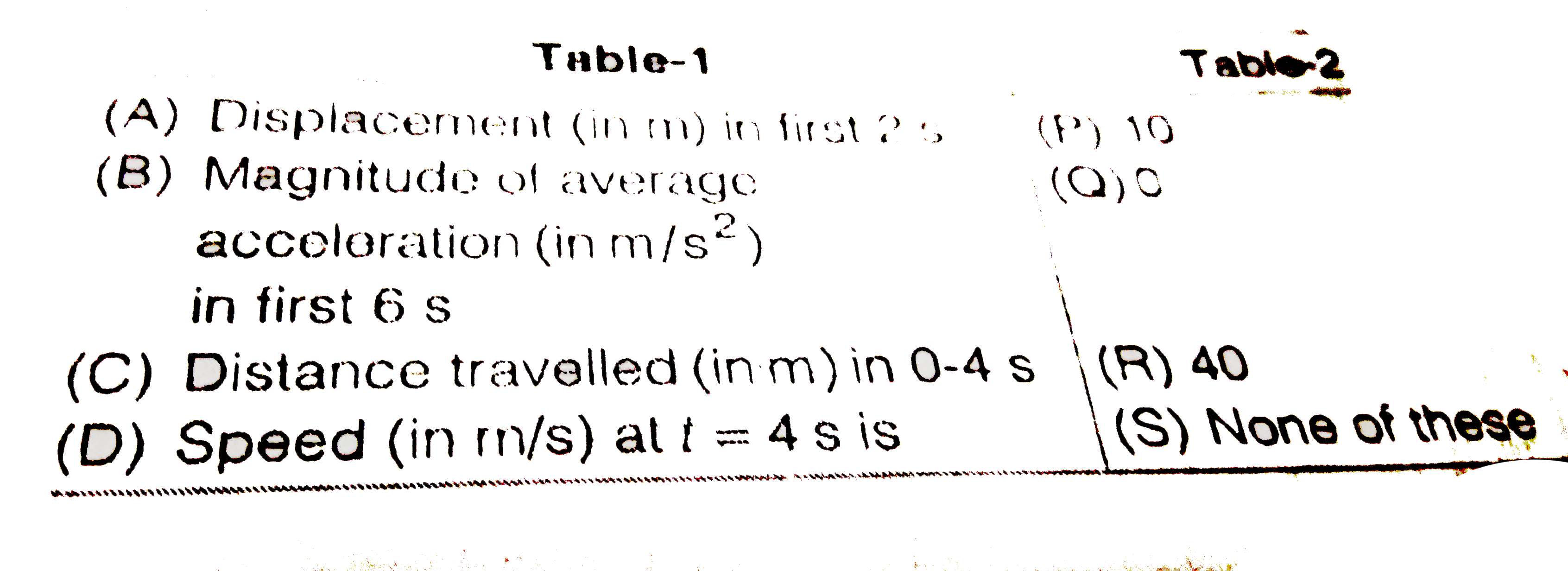A ball is throw vertically upward. It has a speed of 10m/s when it has reached one half of its maximum height. How high does the ball rise ? (Taking g=10m/s2).
15 m
10 m
20 m
5 m
The correct Answer is:B
To solve the problem of how high the ball rises when it is thrown vertically upward, we can follow these steps:
Step 1: Understand the Problem
We know that the ball has a speed of 10ms when it reaches half of its maximum height. We need to find the maximum height (h) the ball reaches.
Step 2: Use the Kinematic Equation
We will use the kinematic equation that relates initial velocity (u), final velocity (v), acceleration (a), and displacement (s):
\( v^2 = u^2 + 2as \)
Step 3: Set Up the Variables
- At maximum height, the final velocity (v) is 0ms.
- The initial velocity (u) when the ball is at half the maximum height is 10ms.
- The acceleration (a) due to gravity is −g=−10ms² (negative because it acts downward).
- The displacement (s) when the ball is at half the maximum height is h2.
Step 4: Apply the Kinematic Equation at Maximum Height
Using the kinematic equation:
\( 0 = (10)^2 + 2(-10)(h/2) \)
Step 5: Simplify the Equation
This simplifies to:
\( 0 = 100 - 10h \)
Step 6: Solve for Maximum Height (h)
Rearranging gives:
\( 10h = 100 \)
\( h = \frac{100}{10} = 10 \text{ meters} \)
Conclusion
The maximum height the ball rises to is 10 meters.
---
We know that the ball has a speed of 10ms when it reaches half of its maximum height. We need to find the maximum height (h) the ball reaches.
We will use the kinematic equation that relates initial velocity (u), final velocity (v), acceleration (a), and displacement (s):
\( v^2 = u^2 + 2as \)
- At maximum height, the final velocity (v) is 0ms.
- The initial velocity (u) when the ball is at half the maximum height is 10ms.
- The acceleration (a) due to gravity is −g=−10ms² (negative because it acts downward).
- The displacement (s) when the ball is at half the maximum height is h2.
Using the kinematic equation:
\( 0 = (10)^2 + 2(-10)(h/2) \)
This simplifies to:
\( 0 = 100 - 10h \)
Rearranging gives:
\( 10h = 100 \)
\( h = \frac{100}{10} = 10 \text{ meters} \)
The maximum height the ball rises to is 10 meters.
Topper's Solved these Questions
- GENERAL KINEMATICS AND MOTION IN ONE DIMENSIONBOOK - A2ZCHAPTER - GENERAL KINEMATICS AND MOTION IN ONE DIMENSIONEXERCISE - AIIMS Questions
20 Videos
- GENERAL KINEMATICS AND MOTION IN ONE DIMENSIONBOOK - A2ZCHAPTER - GENERAL KINEMATICS AND MOTION IN ONE DIMENSIONEXERCISE - Chapter Test
30 Videos
- GENERAL KINEMATICS AND MOTION IN ONE DIMENSIONBOOK - A2ZCHAPTER - GENERAL KINEMATICS AND MOTION IN ONE DIMENSIONEXERCISE - Assertion Reasoning
20 Videos
- FLUID MECHANICSBOOK - A2ZCHAPTER - FLUID MECHANICSEXERCISE - Chapter Test
29 Videos
- GRAVITATIONBOOK - A2ZCHAPTER - GRAVITATIONEXERCISE - Chapter Test
29 Videos
Similar Questions
A ball is projected vertically up wards with a velocity of 100 m/s. Find the speed of the ball at half the maximum height. (g=10m/s2)
View Solution(a) A ball is thrown vertically upward with speed 10m/s and it returns to the ground with speed 8m/s. Find the maximum height attained by the ball.
(b) A ball is thrown vertically upward and if air resistance is half of weight of the ball, find the ratio of time of ascent and time of descent.
(C) Two balls A and B(mA=2mB=2m) are thrown vertically upward. If air resistance is mg/2, find ratio of maximum height attained by them.
View Solution
Knowledge Check
A ball is throw vertically upward. It has a speed of 10m/s when it has reached one half of its maximum height. How high does the ball rise ? (Taking g=10m/s2).
A15 mB10 mC20 mD5 mA ball is projected vertically up with speed 20 m/s. Take g=10m/s2
AIt covers a distance of 5 m in 2nd second of its motionBThe displacement in 2nd and 3rd second are equalCThe distance covered in 2nd and 3rd second are equalDThe average speed for first 4 seconds is zeroA ball is thrown vertically upwards with a speed 70m/s. The distance travelled by theball in its seventh second of motion will be [g=10m/s2]
A10mB2.1mC3.4D5m
A ball is thrown vertically upward with a velocity of 20 m/s. Calculate the maximum height attain by the ball.
View SolutionA particle is projected vertically upward in vacum with a speed 40m/s then velocity of particle when it reaches at maximum height 2s before, is
(Take g=10m/s)
View SolutionA ball of mas 2gm is thrown vertically upwards with a speed of 30m/s from a tower of height 35m. (Given g=10m/s2)

View SolutionA ball is thrown vertically upwards with a velocity of 98m/s. Calculate
(i) The maximum height to which it rises.
(ii) Total time it takes to return to earth.
View SolutionA ball is thrown vertically upward with a velocity of 20 m/s . After 3s , the magnitude of its displacement is (take g = 10 m/s2)
View Solution
